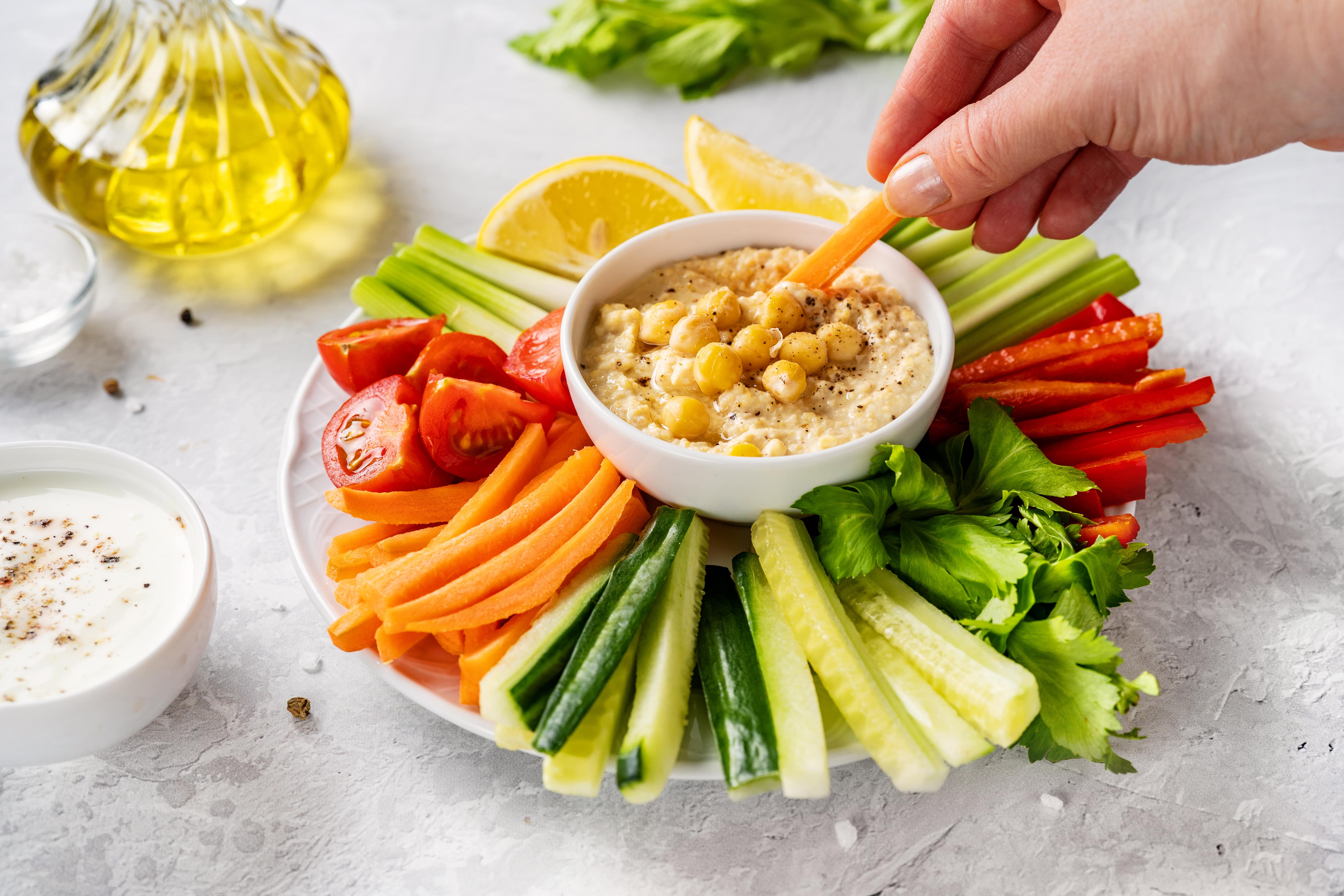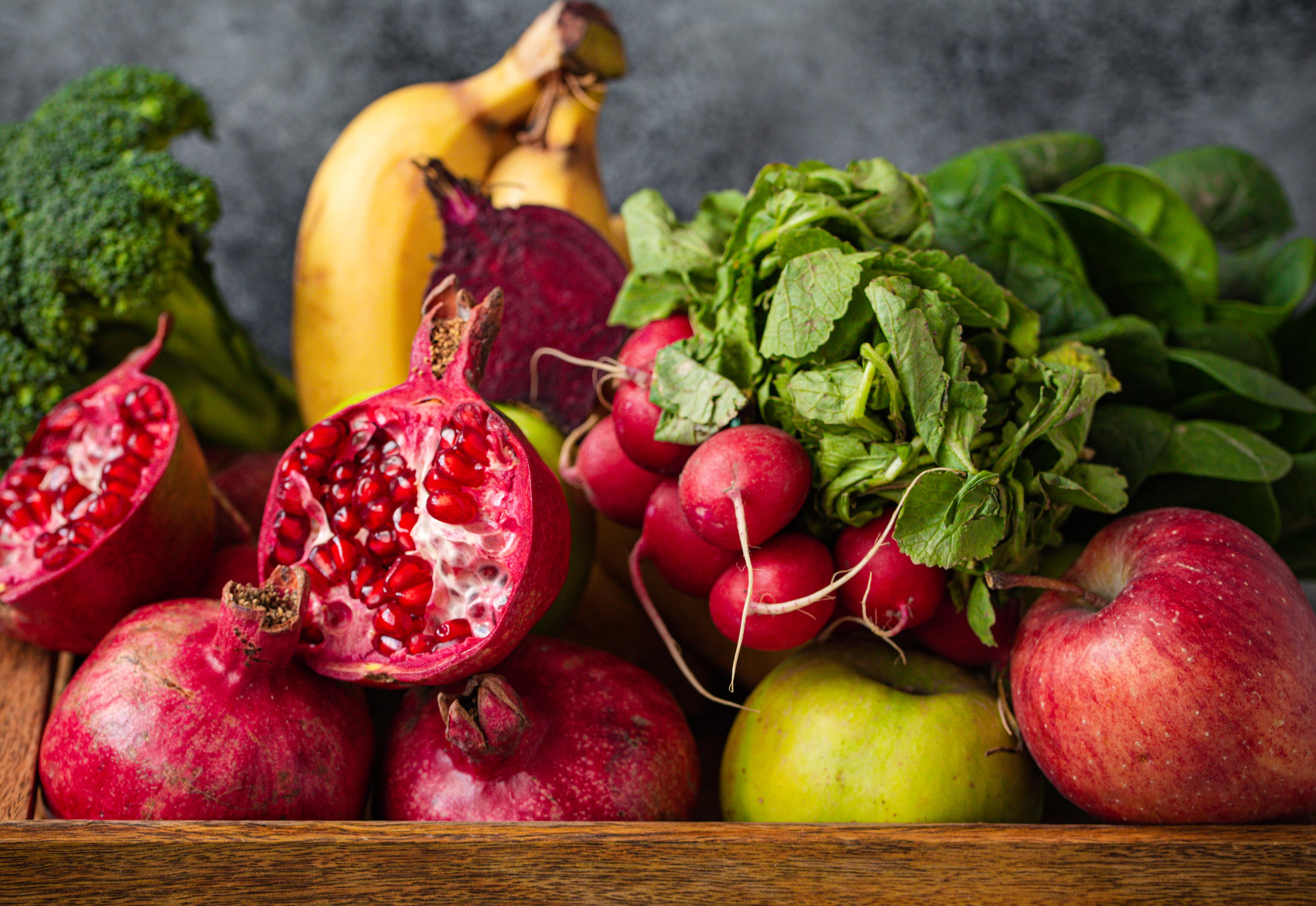Key Takeaways
- Seasonal, low glycemic index produce is rich in fiber, water, and phytonutrients, which help slow carbohydrate absorption, reduce blood sugar spikes, and support steady blood glucose levels.
- Meal sequencing matters. Start with vegetables or fruit, then eat protein and carbs to lower post-meal glucose peaks and improve insulin sensitivity.
- These strategies benefit those with prediabetes, type 2 diabetes, insulin resistance (like PCOS), and anyone seeking better energy and metabolic stability.
{{mid-cta}}
Eating with the seasons isn’t just about fresher flavors or prettier farmers’ market hauls; it's a smart way to help your body keep blood sugar steady. Many fruits and vegetables that peak in each season naturally have a lower glycemic index (low GI) and are loaded with fiber, water, and phytonutrients. This combination slows how quickly carbohydrates are broken down and absorbed, leading to a gentle, sustained rise in glucose instead of a sharp spike.
Think of it like swapping a roller coaster for a smooth, scenic drive, less whiplash for your metabolism, more all-day energy.
Why Seasonal, Low‑GI Produce Supports Glucose Control
Carbs aren’t all created equal. Low-GI foods release glucose gradually, so your body needs less insulin to manage them. Over time, that can mean better insulin sensitivity and easier blood sugar management.
Seasonal produce has an extra edge: It’s often at peak nutrient density, high in fiber, and naturally hydrating.1 Apricots in spring, plums in summer, and hearty squash in fall, and root vegetables in winter all bring complex carbs plus vitamins, minerals, and antioxidants your body needs, without sending your blood sugar on a thrill ride.
Meal Sequencing & Pairing: Small Shifts, Big Impact

It’s not just what you eat, but when and how you eat it.
- Fiber first: Starting meals with vegetables or salad helps slow carb absorption and blunts post-meal glucose spikes.2
- Protein + healthy fat pairing: Combining low-GI produce with protein or fats helps moderate glycemic load and keeps you satisfied longer. Examples of this include: blueberries with Greek Yogurt and walnuts, or roasted Brussels sprouts drizzled with olive oil alongside grilled salmon.
The Signos Plate Method: Seasonal Edition
Balanced eating doesn’t have to mean food scales and calculators. Using the Signos Plate Method is a simple, visual way to build meals that keep your glucose curve steady.3
½ Plate: Non-Starchy Veggies
These are your low glycemic index powerhouses: high in fiber, water, vitamins, and antioxidants to slow digestion and support satiety.
- Leafy greens: spinach, kale, arugula, romaine
- Cruciferous veggies: broccoli, cauliflower, Brussels sprouts, cabbage
- Seasonal picks: asparagus (spring), zucchini (summer), winter squash (fall/winter)
- Other options: bell peppers, cucumbers, green beans, eggplant, mushrooms
¼ Plate: Lean Protein
Protein helps reduce the glycemic load of your meal, keeps you full, and works with fiber to slow the absorption of carbohydrates.
- Fish and seafood: salmon, tuna, shrimp
- Poultry: chicken, turkey
- Plant-based: tofu, tempeh, chickpeas, lentils
- Eggs and dairy: hard-boiled eggs, cottage cheese, Greek yogurt
¼ Plate: Low-GI Carbohydrates
Choose low GI fruits and whole-food carbs with plenty of fiber and minimal added sugars to keep blood glucose levels stable.
- Low-glycemic fruits: apricots, plums, raspberries, blackberries, pomegranate, cranberries (fresh or unsweetened)
- Whole grains: quinoa, barley, farro, bulgur, brown rice
- Starchy veggies: sweet potatoes, carrots, beets, corn, beans
- Legumes: black beans, kidney beans, lentils
Small Side: Healthy Fats
Healthy fats add flavor, promote satiety, and help control the rate at which glucose enters the bloodstream.
- Plant-based: olive oil, avocado, nuts, seeds
- Animal-based: fatty fish (salmon, mackerel, sardines)
- Pair with produce: blueberries with walnuts, roasted veggies with tahini, or a citrus salad with avocado and grapefruit
Seasonal Meal Inspiration

Eating seasonally keeps your plate exciting, nutrient-rich, and naturally aligned with blood sugar control. Here’s how a day of balanced meals and snacks might look in different seasons, following the Signos Plate Method and focusing on low-GI foods.
Spring + Summer
- Breakfast: Greek yogurt with raspberries, blackberries, chia seeds, and chopped walnuts
- Snack: Sliced cucumber and bell peppers with hummus
- Lunch: Grilled chicken salad with mixed leafy greens, cherry tomatoes, avocado, and balsamic vinaigrette with a plum
- Snack (optional): Almonds with a few blueberries
- Dinner: Grilled salmon with lemon and dill, roasted zucchini, and a small serving of quinoa
Fall
- Breakfast: Vegetable omelet with spinach, mushrooms, and goat cheese; side of sliced apricots
- Snack: Apple slices with almond butter
- Lunch: Lentil and chickpea soup with carrots and celery; served with a side salad of arugula, roasted beets, and pumpkin seeds
- Snack (optional): Cranberries mixed into plain yogurt with cinnamon
- Dinner: Baked chicken with roasted Brussels sprouts and cauliflower, plus ½ cup of barley
Winter
- Breakfast: Warm steel-cut oatmeal topped with pomegranate seeds, chopped pecans, and a dollop of Greek yogurt
- Snack: Celery sticks with hummus or guacamole
- Lunch: Roasted vegetable salad (butternut squash, broccoli, red onion) with olive oil and grilled turkey breast for balanced protein and fiber.
- Snack (optional): Prunes with a handful of walnuts
- Dinner: Seared cod with sautéed spinach, garlic, and a side of farro
Who Benefits Most from These Strategies
While anyone can enjoy the flavor and nutrition of seasonal produce, these strategies can be a game-changer if you:
- Have prediabetes or type 2 diabetes. Choosing low-glycemic produce and starting meals with fiber-rich veggies can lower post-meal spikes, improve overall blood sugar control, and make diabetes management easier.3
- Live with insulin resistance, including PCOS. Balanced plates with low GI carbs, protein, and healthy fats help your body use insulin more effectively, keeping excess glucose out of the bloodstream.4
- Want steadier energy, mood, and focus. Even without a diagnosis, minimizing glucose swings with seasonal, low-GI foods can help you avoid afternoon crashes, reduce cravings, and feel sharper all day.5
The Bottom Line

Seasonal, low glycemic index produce pack a triple punch, fiber, resistant starch, and phytonutrients, that work together to keep your glucose curve steady. Starting meals with vegetables or fruit, then adding protein or healthy fats, is a small shift that delivers big benefits: fewer spikes, longer-lasting satiety, and better blood sugar control over time.
Make plant-forward, seasonal plates your go-to. Even simple habits, like eating berries or cruciferous veggies first, can lead to measurable improvements in post-meal blood glucose and overall health.
Learn More With Signos’ Expert Advice
Signos brings together cutting-edge science and expert guidance to help you understand how different foods affect your blood sugar levels, and how to build meals that work for your body.
Explore more ways to use seasonal, low-GI foods, balance carbohydrates, and fine-tune your meal plan for better energy, focus, and metabolic health. Learn more about how Signos can improve health here and discover practical, science-backed tips on the Signos blog.
Topics discussed in this article:
References
- Giuntini EB, Sardá FAH, de Menezes EW. The Effects of Soluble Dietary Fibers on Glycemic Response: An Overview and Futures Perspectives. Foods. 2022 Dec 6;11(23):3934.
- Imai S, Kajiyama S, Kitta K, Miyawaki T, Matsumoto S, Ozasa N, Kajiyama S, Hashimoto Y, Fukui M. Eating Vegetables First Regardless of Eating Speed Has a Significant Reducing Effect on Postprandial Blood Glucose and Insulin in Young Healthy Women: Randomized Controlled Cross-Over Study. Nutrients. 2023 Feb 26;15(5):1174.
- Nutrition for Life: Diabetes Plate Method. American Diabetes Association. Accessed August 11, 2025.
- Najafabadi MS, Moludi J, Salimi Y, Saber A. A comparison of the portfolio low-carbohydrate diet and the ketogenic diet in overweight and obese women with polycystic ovary syndrome: study protocol for a randomized controlled trial. Trials. 2023 Aug 9;24(1):509.
- DASH Eating Plan. National Heart, Lung, and Blood Institute. Accessed August 11, 2025.
.svg)



.jpg)
.svg)

.svg)
.svg)
.svg)
.svg)
.svg)
.svg)
.svg)
